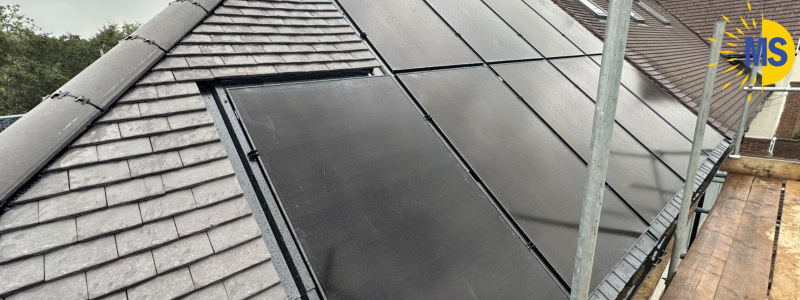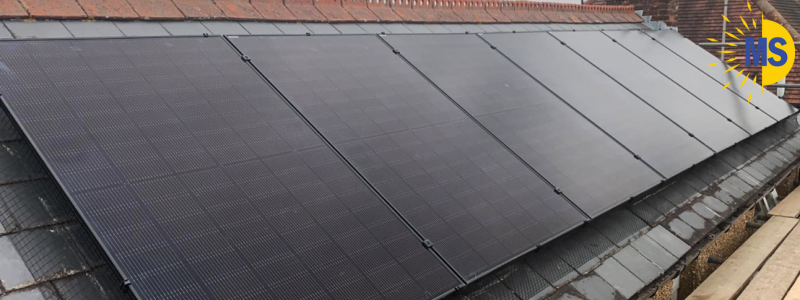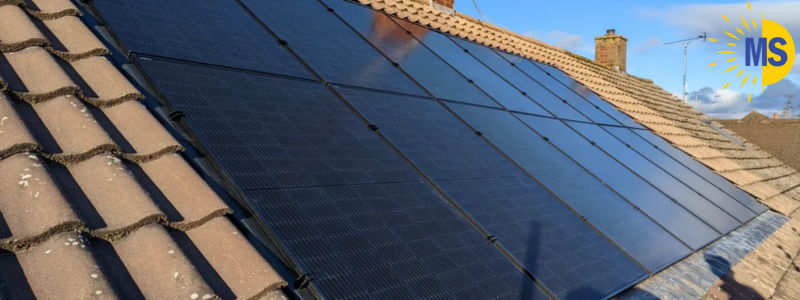Solar Panel Types in Texas: Which Is Best for Your Home?
When you’re ready to make the switch to solar energy in Texas, one of the first decisions you’ll face is choosing the right type of solar panels for your home. With Texas’s intense summer heat, abundant sunshine, and occasional severe weather, not all solar panels perform equally well in the Lone Star State’s unique climate conditions.
Understanding the differences between panel types can save you thousands of dollars and ensure your system delivers optimal performance for decades to come. Let’s break down the main solar panel options available to Texas homeowners and help you determine which technology makes the most sense for your specific situation.
The Three Main Types of Solar Panels

Solar technology has evolved significantly over the past decade, but three primary panel types dominate today’s residential market. Each offers distinct advantages and trade-offs that become especially important when dealing with Texas’s climate extremes.
Monocrystalline Solar Panels
Monocrystalline panels represent the premium tier of solar technology. Made from single-crystal silicon, these panels feature the distinctive dark black appearance that many homeowners prefer for aesthetic reasons.
The manufacturing process involves growing large silicon crystals and slicing them into wafers, which creates the uniform appearance and superior efficiency ratings. Most monocrystalline panels achieve efficiency ratings between 20-22%, meaning they convert more sunlight into electricity per square foot than other panel types.
For Texas homeowners, monocrystalline panels offer several key advantages. They perform exceptionally well in high-temperature conditions, maintaining efficiency even during brutal summer months when temperatures soar above 100°F. Their superior heat tolerance means less power degradation during peak usage periods when air conditioning demands are highest.
The space efficiency becomes particularly valuable for homes with limited roof space or complex roof designs common in Texas neighborhoods. You can generate more power with fewer panels, which often translates to lower installation costs and cleaner aesthetics.
However, monocrystalline panels typically carry the highest upfront cost. The premium pricing reflects the complex manufacturing process and superior performance characteristics, but the investment often pays off through higher energy production over the system’s lifetime.
Polycrystalline Solar Panels
Polycrystalline panels, sometimes called multicrystalline, offer a middle-ground option that balances performance with affordability. These panels are manufactured by melting multiple silicon fragments together, creating the characteristic blue color with visible crystal boundaries.
The simpler manufacturing process results in lower production costs, making polycrystalline panels more budget-friendly than their monocrystalline counterparts. Efficiency ratings typically range from 15-17%, which is respectable though not industry-leading.
For many Texas homeowners, polycrystalline panels provide an excellent value proposition. While they don’t achieve the peak efficiency of monocrystalline panels, they still perform well in Texas’s sunny climate and offer significant cost savings on larger installations.
The slightly lower heat tolerance compared to monocrystalline panels rarely creates issues in real-world Texas installations. The performance difference becomes negligible when you factor in the lower upfront investment and similar 25-year warranties offered by reputable manufacturers.
Polycrystalline panels work particularly well for homes with ample south-facing roof space where you can install additional panels to compensate for the modest efficiency difference. The cost savings often outweigh the slightly larger system footprint required.
Thin-Film Solar Panels
Thin-film technology represents a completely different approach to solar panel construction. Instead of crystalline silicon, thin-film panels use materials like cadmium telluride (CdTe) or amorphous silicon deposited in extremely thin layers on glass or metal substrates.
The lightweight, flexible nature of thin-film panels opens up installation possibilities not available with traditional rigid panels. They can conform to curved surfaces and integrate into building materials in ways that crystalline panels cannot.
However, thin-film panels typically achieve efficiency ratings of only 10-12%, significantly lower than crystalline alternatives. This means you need substantially more panels to generate the same amount of electricity, which can be problematic for Texas homes with limited roof space.
The lower efficiency becomes especially challenging in Texas, where maximizing production during peak summer months is crucial for offsetting high air conditioning costs. Most residential installations in Texas favor crystalline panels for their superior power density and proven performance in hot climates.
Solar Panels Performance in Texas Climate Conditions

Texas presents unique challenges for solar panels that don’t exist in milder climates. Understanding how different panel types respond to these conditions helps ensure your investment delivers expected returns.
Heat Tolerance and Temperature Coefficients
All solar panels lose efficiency as temperatures rise, but the degree of performance degradation varies significantly between panel types. This temperature coefficient becomes critically important in Texas, where panel temperatures can exceed 150°F during summer months.
Monocrystalline panels typically have the best temperature coefficients, losing only 0.35-0.4% efficiency per degree Celsius above standard test conditions. Polycrystalline panels perform slightly worse at 0.4-0.45% per degree, while thin-film panels vary widely depending on the specific technology used.
During a typical Texas summer day, this difference can translate to 5-10% variation in actual power output between panel types. Over the course of a year, superior heat tolerance can mean hundreds of dollars in additional energy production.
Durability Against Weather Extremes
Texas weather can be brutal on solar installations. From hailstorms along the I-35 corridor to hurricane-force winds near the Gulf Coast, panels need to withstand conditions that would destroy lesser equipment.
All quality solar panels sold in Texas must meet stringent testing standards, including impact resistance from 1-inch hail at 50 mph and wind loads up to 140 mph. However, crystalline panels generally offer superior durability compared to thin-film alternatives.
The solid construction of monocrystalline and polycrystalline panels provides better resistance to thermal expansion and contraction that occurs during Texas’s dramatic temperature swings. Many manufacturers offer enhanced warranties specifically for installations in high-heat, severe weather regions like Texas.
Degradation Rates Over Time
Solar panels gradually lose efficiency over their 25-30 year lifespan, but degradation rates vary between technologies. In Texas’s harsh climate, these differences become more pronounced.
Premium monocrystalline panels typically degrade at rates of 0.25-0.35% annually, while standard polycrystalline panels may degrade slightly faster at 0.4-0.5% per year. Thin-film panels often experience higher degradation rates, particularly in high-temperature environments.
Over a 25-year period, these seemingly small differences compound significantly. A panel with 0.3% annual degradation will retain 92.5% of its original capacity after 25 years, while a panel degrading at 0.5% annually will retain only 88.2% capacity.
Solar Cost Considerations for Texas Homeowners

The solar panel market in Texas has become increasingly competitive, driving down prices across all panel types while improving quality and performance warranties.
Upfront Investment vs. Long-term Returns
Monocrystalline panels typically cost $0.85-1.10 per watt, while polycrystalline panels range from $0.65-0.85 per watt. Thin-film panels may appear cheaper at $0.50-0.70 per watt, but the lower efficiency often requires larger systems that eliminate the cost advantage.
When evaluating costs, consider the total system price including installation, inverters, and other components. A smaller, more efficient monocrystalline system may cost less overall than a larger polycrystalline system that produces the same amount of electricity.
Texas’s net metering policies and federal tax incentives apply regardless of panel type, so focus on maximizing long-term energy production rather than minimizing upfront costs alone.
Financing Options and Payback Periods
Most Texas solar installations pay for themselves within 6-8 years through electricity bill savings. Higher-efficiency panels may have shorter payback periods despite higher upfront costs, particularly for homes with high energy usage or limited roof space.
Solar loans, leases, and power purchase agreements are widely available throughout Texas, often with terms that make monthly payments lower than current electricity bills. The panel type you choose affects system size and total project cost, which influences financing options and terms.
Making the Right Choice for Your Home
The best solar panel type for your Texas home depends on several factors specific to your situation and priorities.
Consider monocrystalline panels if you have limited roof space, prioritize maximum efficiency, or want the sleekest appearance. The premium investment often pays off through higher energy production and better heat tolerance in Texas’s climate.
Polycrystalline panels make sense for homeowners with ample roof space who want to balance performance with affordability. They offer excellent value for money while still delivering strong performance in Texas conditions.
Thin-film panels work best for specialized applications like curved roofs or building-integrated installations, but rarely make sense for standard residential applications in Texas due to efficiency limitations.
Whatever panel type you choose, work with experienced Texas installers who understand local climate challenges and building codes. Quality installation matters as much as panel selection for ensuring decades of reliable performance and maximum energy savings.
The solar revolution in Texas continues accelerating, and choosing the right panels for your home puts you at the forefront of this energy transformation while protecting your family’s financial future.

